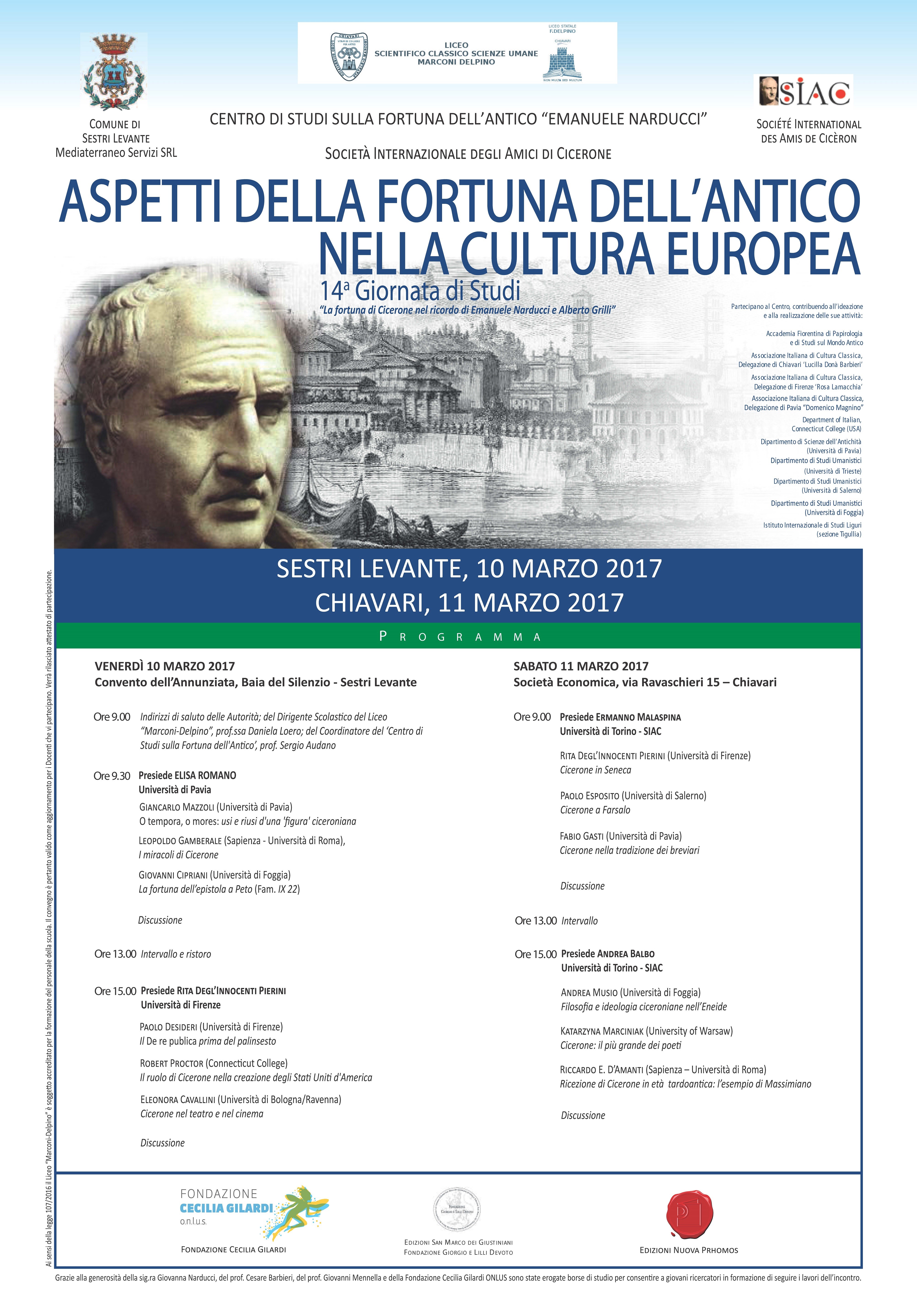Cicerone nella tradizione dei breviari - Cicero in the Breviary Tradition
DOI:
https://doi.org/10.13135/2532-5353/2824Abstract
Riassunto L’articolo indaga la presenza di Cicerone nei testi della tradizione dei breviari seguendo tre linee portanti. Si intende valutare infatti la persistenza della lezione retorica di marca ciceroniana, da un lato (e quindi Cicerone come ideale teorico dello scrivere, ovviamente anche dello scrivere in un certo modo); si tenta di riconoscere eventuali riferimenti precisi alla scrittura ciceroniana, alla ricerca della ricezione dello scrittore come rappresentante canonico dello scrivere letterario latino; infine si verifica la presenza dell’uomo politico e dell’oratore nella ricostruzione degli eventi di quel denso momento storico (e quindi la presenza o meno di giudizi sull’azione politica di un protagonista). L’ambito teorico, quello stilistico e infine quello prosopografico sono di fatto le canoniche tre varianti, non esclusive l’una dell’altra, in cui l’immagine di Cicerone si manifesta nei secoli a venire. Osservarne presenza e variabili in un campo d’indagine come quello proposto – testi storiografici connotati dalla scrittura breve – rappresenta senz’altro un’indagine interessante anche dal più generico punto di vista storico-culturale, che investe le modalità di ricezione di un modello universale di scrittore e uomo politico.
Abstract. This article investigates the presence of Cicero in the texts of the compendium tradition according to three main lines. It intends to consider, on the one hand, the persistence of Ciceronian rhetorical teaching (and so Cicero as the theoretical ideal of the author, and, obviously, of writing in a certain manner); it tries to identify potential specific references to Cicero’s writings in search of the reception of the author as a canonical representative of Latin literary writing; and, finally, it confirms the presence of the politician and orator in the reconstruction of events from that dense historical moment (and so the presence or absence of judgements about the political activity of a protagonist). The theoretical, stylistic, and, finally, prosopographic spheres are in fact the three canonical threads – not exclusive of each other – in which the image of Cicero is manifested in the following centuries. An observation of their existence and variability in this proposed field of investigation – historiographical texts characterised by their brevity – also undoubtedly represents an interesting inquiry from the perspective of cultural history, which touches upon the process of reception of a universal model of author and politician.
Downloads
Downloads
Published
How to Cite
Issue
Section
License
Authors who publish with this journal agree to the following terms:
- Authors retain copyright and grant the journal right of first publication with the work simultaneously licensed under a Creative Commons Attribution License that allows others to share the work with an acknowledgement of the work's authorship and initial publication in this journal.
- Authors are able to enter into separate, additional contractual arrangements for the non-exclusive distribution of the journal's published version of the work (e.g., post it to an institutional repository or publish it in a book), with an acknowledgement of its initial publication in this journal.


 Ciceroniana On Line is recognised by ANVUR (the National Agency for the Evaluation of the University System and Research) as a CLASS A journal for the Sciences of Antiquity, Philology, Literature and History of Art (
Ciceroniana On Line is recognised by ANVUR (the National Agency for the Evaluation of the University System and Research) as a CLASS A journal for the Sciences of Antiquity, Philology, Literature and History of Art ( The journal is included in DOAJ. The DOAJ listing of the journals is available at
The journal is included in DOAJ. The DOAJ listing of the journals is available at  The journal is indexed in
The journal is indexed in  The journal has been included in ERIH PLUS. The ERIH PLUS listing of the journals is available at
The journal has been included in ERIH PLUS. The ERIH PLUS listing of the journals is available at 

